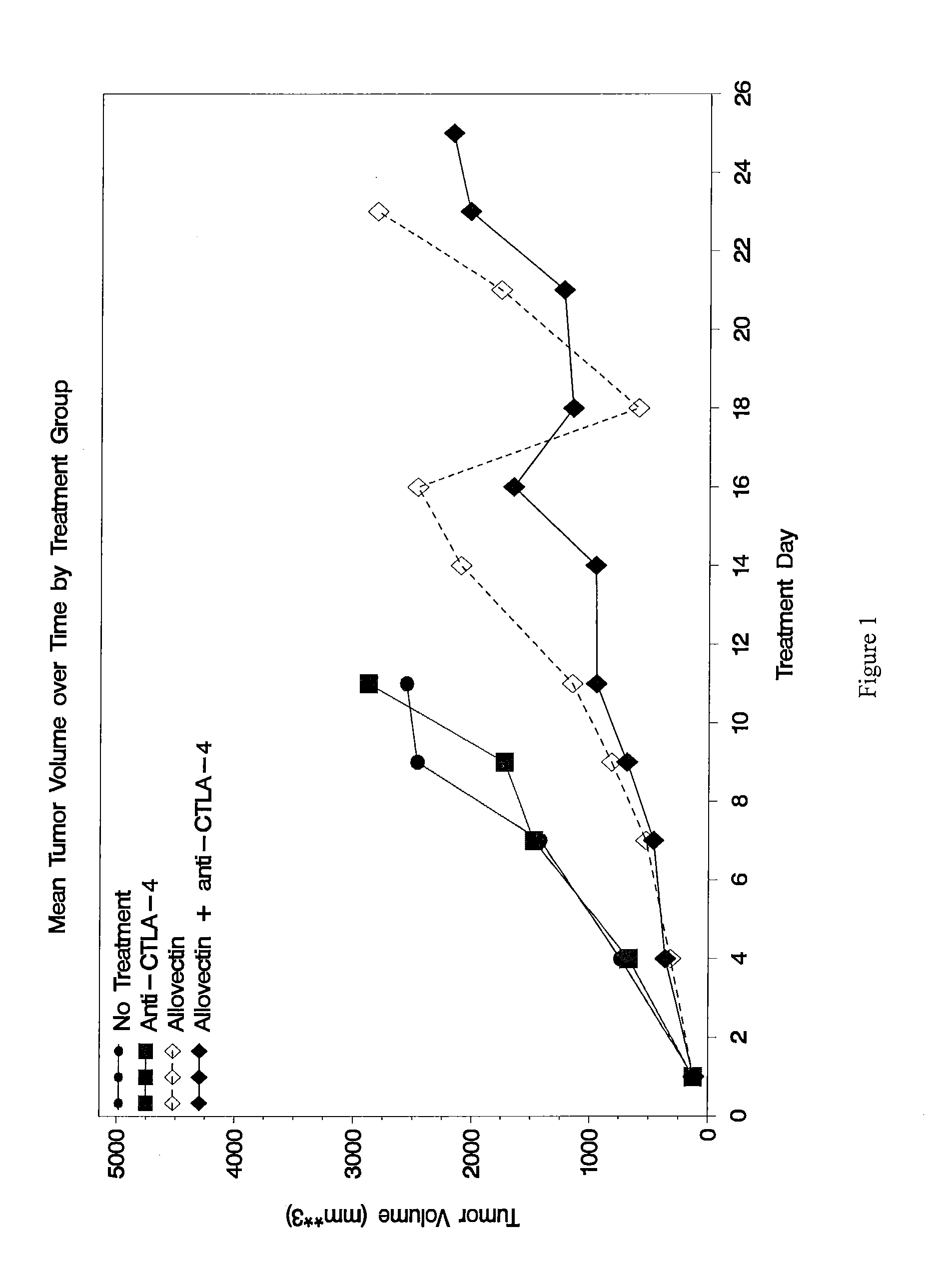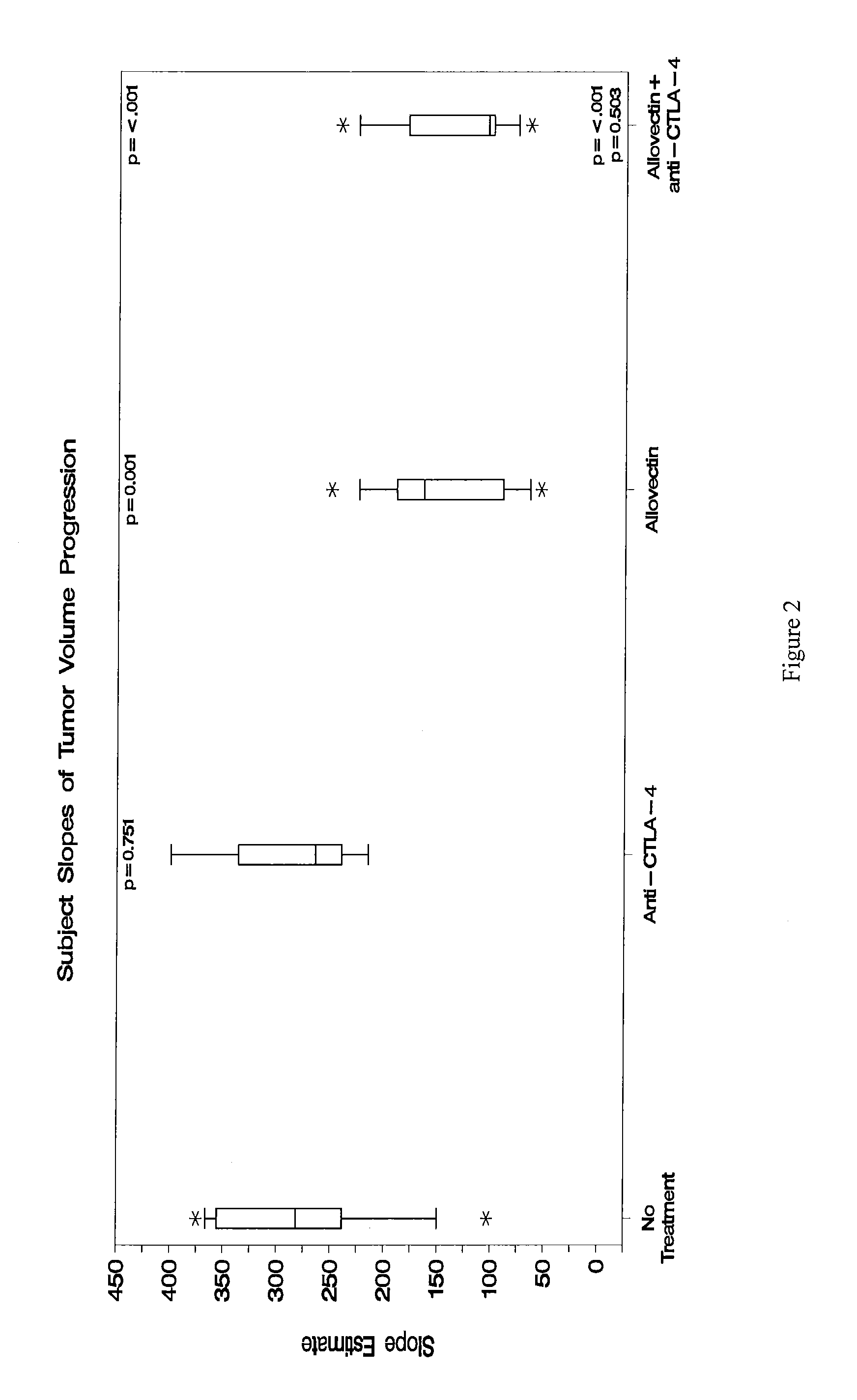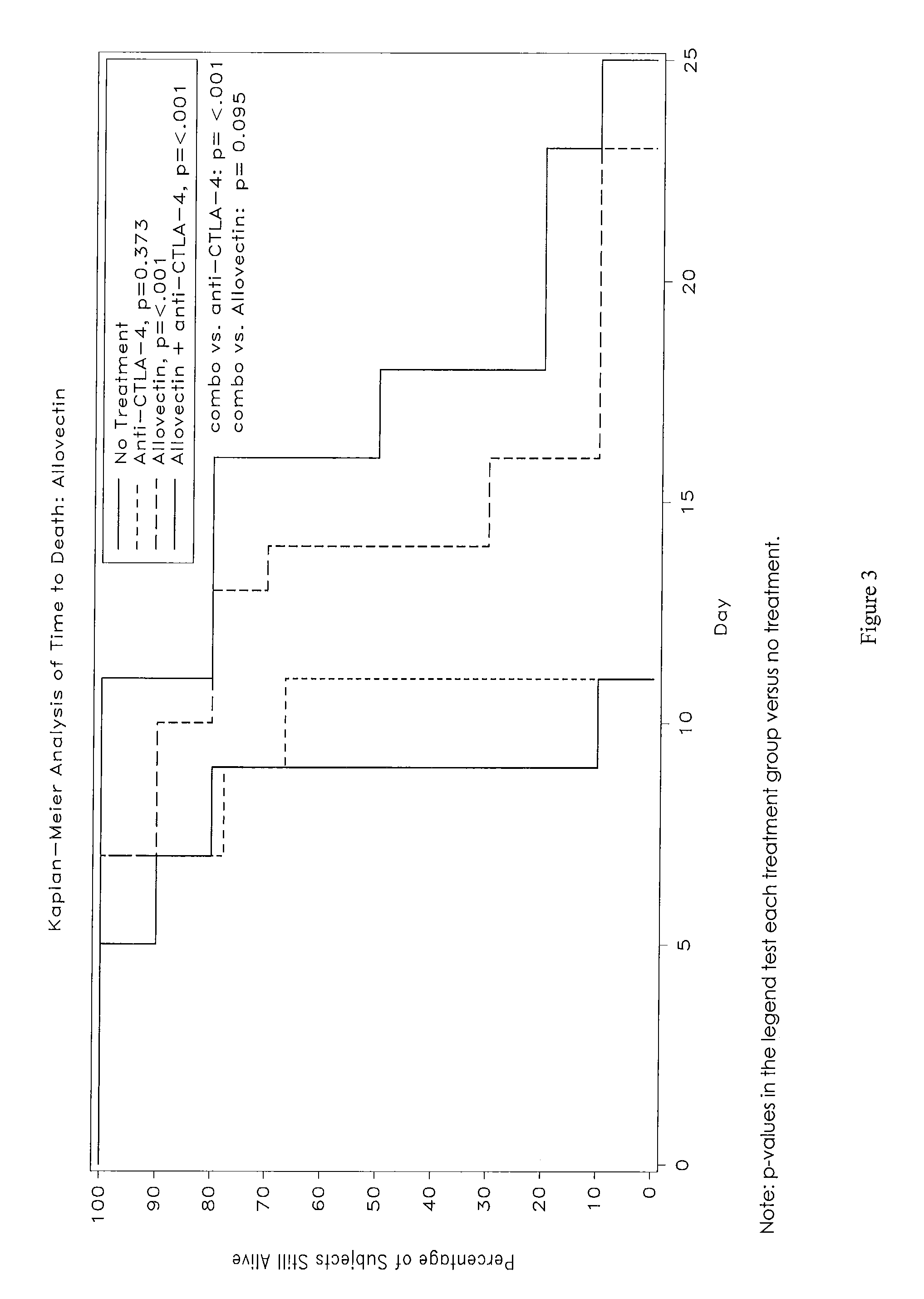Synergistic Anti-tumor efficacy using alloantigen combination immunotherapy
a combination immunotherapy and alloantigen technology, applied in the field of cancer treatment, can solve the problems of tumor cells not being able to present antigens to cytotoxic t cells, tumor cells dying, deficient expression of class i mhc molecules, etc., and achieve the effect of enhancing the activation of t cells
- Summary
- Abstract
- Description
- Claims
- Application Information
AI Technical Summary
Benefits of technology
Problems solved by technology
Method used
Image
Examples
example 1
[0111]VCL-1005, DMRIE / DOPE, and Allovectin® were prepared by Vical Incorporated. The bicistronic plasmid VCL-1005 (encoding human HLA-B7 heavy chain and chimpanzee β2-microglobulin) was formulated at 2 mg / mL in IVF-1 vehicle (0.9% saline containing 10 μL / mL glycerin), the lipids DMRIE and DOPE was mixed at a 1:1 molar ratio and adjusted to a total lipid concentration of 0.86 mg / mL in IVF-1, and Allovectin® was prepared as 2 mg / mL VCL-1005 formulated with 0.86 mg / mL DMRIE / DOPE in IVF-1. Hamster anti-murine-CTLA-4 (clone 9H10) and an isotype-matched control hamster IgG (clone SHG-1) were purchased as 1 mg / mL, azide-free solutions (BioLegend, San Diego, Calif.).
[0112]Animal studies were conducted by Piedmont Research Center (Morrisville, N.C.) according to guidelines recommended in the Guide for Care and Use of Laboratory Animals (National Academy Press, Washington, D.C.) under the oversight of an Institutional Animal Care and Use Committee. B16-F10 murine melanoma cells were maintaine...
example 2
[0122]Anti-tumor activity may be confirmed using a study with the following or similar design. Solid B16-F10 tumors are established on the flank of C57 / BL6 or B6D2F1 mice, and when tumors are palpable and approximately 100 mm3 in volume, animals are randomized to treatment groups. Treatment groups include: anti-PD-1, anti-PD-L1, Allovectin plus normal IgG (or an irrelevant antibody), Allovectin plus anti-PD-1, Allovectin plus anti-PD-L1, and non-treated tumor-bearing mice as controls. Allovectin is delivered by intratumoral injection as a 100 μg dose for four consecutive days (100 μg qdx4), and antibodies are delivered by intraperitoneal injection as 200 μg doses every 3 days until study end (200 μg q3d). Antibodies are reactive with mouse PD-1 or PD-L1, such as the rat monoclonal antibodies RPM1-14 and 10F.9G2, respectively. Animals are followed for tumor volume (measured every 3 days using calipers) and survival; mean tumor volume slopes are compared between groups using a one-way...
PUM
 Login to View More
Login to View More Abstract
Description
Claims
Application Information
 Login to View More
Login to View More - R&D
- Intellectual Property
- Life Sciences
- Materials
- Tech Scout
- Unparalleled Data Quality
- Higher Quality Content
- 60% Fewer Hallucinations
Browse by: Latest US Patents, China's latest patents, Technical Efficacy Thesaurus, Application Domain, Technology Topic, Popular Technical Reports.
© 2025 PatSnap. All rights reserved.Legal|Privacy policy|Modern Slavery Act Transparency Statement|Sitemap|About US| Contact US: help@patsnap.com



